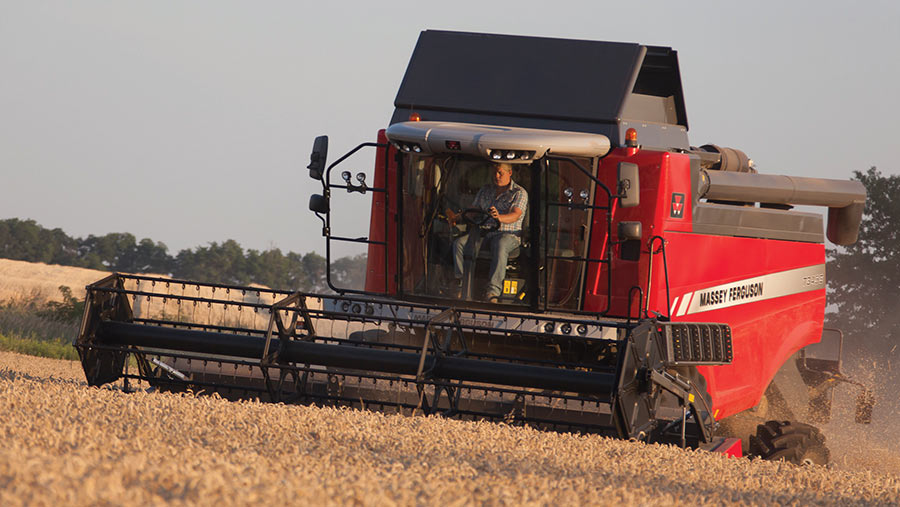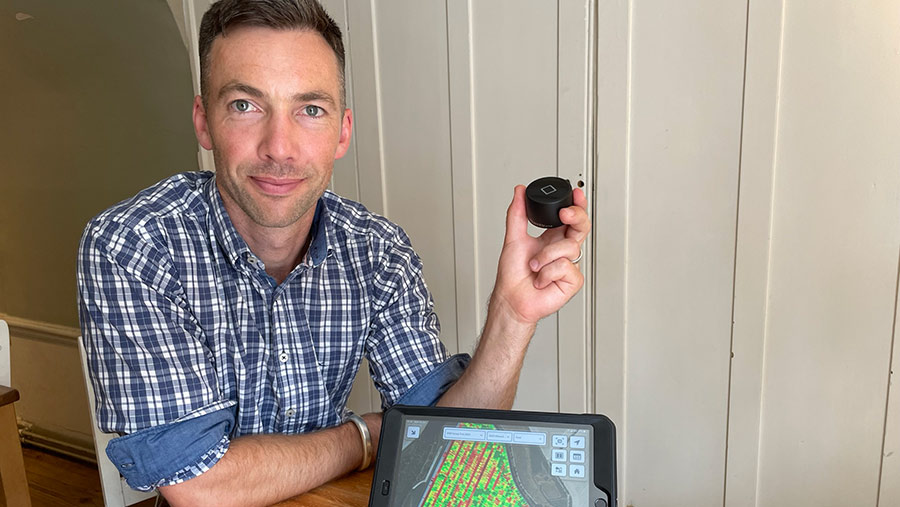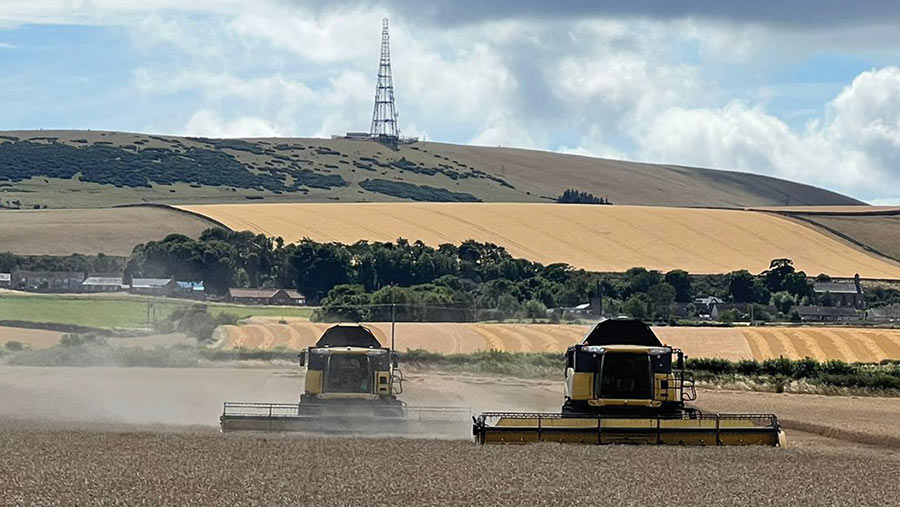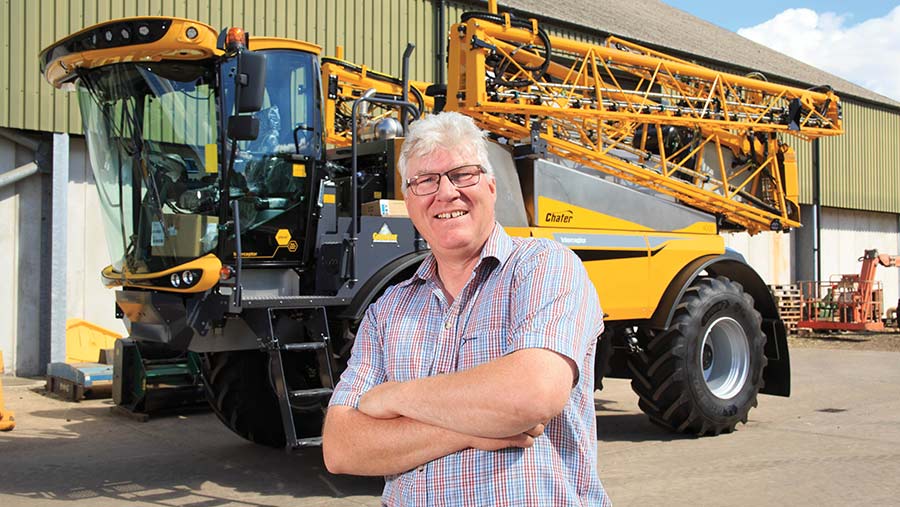Retrofit combine yield monitor provides low-cost crop data
 © Bayer
© Bayer From decision-making on crop dryer settings to variety choices for the next cropping year, there is value to be had in being able to quickly access and make use of yield stats harvested by the combine.
And whether you are running an elderly or basic-spec machine, or a modern model with all the bells and whistles, retrofit combine data collection technology and a cloud-based digital management platform can provide just that.
Bayer’s FieldView, for example, aims to bring together data collected from various field operations, including harvesting grain and oilseeds, and make it readily available for analysis.
See also: Agronomist-built combine attachment helps monitor losses
As Max Dafforn, Bayer’s digital campaign manager for FieldView, explains: “A lot of farmers collect harvest data on a memory stick in the combine cab but that’s where it stays – at least until after the rush to get cultivations and drilling done.
“It just means the opportunity to evaluate and make decisions based on the data is pushed further down the line, and so it loses value.”
Introduced three years ago in Britain, where it is available on a £300 a year subscription, FieldView is reckoned to be one of the most widely used digital farming platforms globally, covering some 80m hectares.

Max Dafforn © Bayer
It can be used to bring together data collected from tractors, sprayers, spreaders and drills, as well as combines, that are otherwise likely to be held in different locations and formats.
The key hardware item is FieldView Drive, a data-collection and transfer device priced at £280 that connects to an Apple iPad by Bluetooth.
On combines, it can be plugged into an existing yield mapping system and for harvesters without that resource a data gathering kit is available for around £4,400.
Reckoned to take around three hours to install, the Yield Kit comprises a GPS receiver for position and speed data, a moisture sensor and a mass flow sensor installed on the clean grain elevator to measure grain or seed volume, plus the wiring needed to connect to the Drive unit.
A FieldView cab app for the iPad – an Android version is in development – provides the means of inputting parameters such as the cutting width, a table height trigger to start and stop recording, and other related settings to achieve accurate yield calculations.
And because the system knows where the combine has cut thanks to the GPS signal, it can also take partial-width cuts into account at angled headlands and the like.
Field stats
With data points taken every second, the yield mapping process is detailed, and with a data connection, the iPad will stream to the cloud-based FieldView platform, enabling information to be accessed and viewed on a real-time basis remotely on a mobile phone.
“Spot yield and the average for the field are shown, along with an estimate of the time remaining to finish a field, which can be useful for organising moves to another location,” explains Max.
“Real-time moisture content is also shown, and that can be helpful to whoever manages intake at the store if a change of moisture level needs a response in terms of dryer setting.”
In addition, users can opt for a text alert if the moisture level exceeds a particular value, and a daily harvesting progress report is available in PDF form.
Yield maps generated on the FieldView platform are purposely presented in raw data form rather than “prettified” by smoothing, and within the app, simply drawing around areas of interest with a finger enables users to see comparative yields.
“For example, users can select a red block indicating an area of lower-yielding crop and see by how much it falls short of the field average, or compare yields between individual passes of the combine,” notes Max.
“That function also makes it quick and easy to explore on-farm trials of different varieties, which could influence choices for the following crop, and different strategies for nitrogen and other fertilisers, including variable versus flat rate applications.”
Moreover, in addition to its yield mapping role, the Drive unit can be plugged into the diagnostics port of a tractor’s isobus system to capture data while drilling, applying fertiliser or spraying crop protection products to create records of these operations.
It also has a task manager function, creating variable-rate application maps for spreaders and sprayers, for example.
Case study: Cloud Farming, East Lothian

© Bayer
Grower Chris Leslie’s summary of his experience of the FieldView Yield Kit is that it’s easy to install, works seamlessly and provides useful data without having to spend hours in front of a computer.
The Cloud Farming business he operates with partners provides fellow farmers in south and central Scotland with strategy and agronomy advice, with a focus on regenerative farming solutions and soil management.
Grain storage and machinery resources are also supplied, including two New Holland CR combines for harvesting.
“We needed only the FieldView Drive unit for one of the combines because it already had a yield mapping system, but the other needed the full kit,” recalls Chris.
The biggest problem is keeping the iPad charged because the app consumes a fair bit of power, he says, so a USB port was wired in to keep the single power outlet in the cab available for charging the operator’s mobile phone.
“One thing that has impressed me is that when we’re running both combines in the same crop, FieldView automatically populates the field record with data from both machines – you don’t have to touch it,” says Chris.
“Apart from gathering data for monitoring our own trials, such as different spray programmes, it’s useful to be able to access information that can be used on the day.”
“One of our clients grows wheat, aiming for a milling premium, and malting barley, and by logging-in from the store he can monitor what’s coming off the combine and be more selective about storage rather than putting everything in one big heap.
“For others, being able to access the tonnages coming in enables them to plan budgets at an early stage.”
Case study: Oxton Estate, Nottinghamshire

Richard Cross © Tim Scrivener
At the Oxton Estate, Southwell in Notts, estate manager Richard Cross has data captured by a FieldView Drive unit transferred into the Green Light Gower Management system to help with crop financial benchmarking.
His three years of records held in the FieldView platform itself will also be used to help define the next steps in the estate’s environmental schedule and to create application maps for variable-rate granular and liquid fertiliser application.
Since the New Holland CR combine used to harvest wheat, barley and oilseed rape already had mapping resources, the only work needed was to create a connection into the canbus data streaming cable and plug in the Drive unit.
“The yield maps are very useful in the way you can alter the definition from coarse to fine, depending upon how much detail you want to see,” explains Richard.
“Being on the estate many years means I know where there are issues with clay caps and the like, but the yield map defines those areas so we can create prescription maps for variable rate seeding, which we’re planning to do this year, to hopefully bring the yield in those areas up to the rest of the field,” he says.
Variable-rate prescriptions are already being created and used successfully for nitrogen application through a Chafer self-propelled sprayer using John Deere precision farming technology.
“The prescription map is created in FieldView, transferred to the MyJohnDeere platform, and then exported to the sprayer, so it’s quite straightforward,” says Richard.
Precision farming applications apart, there are practical benefits during harvest from being able to remotely access the FieldView Cab app, he adds.
“When I’m in the grain store, I can see exactly what’s coming in and if the moisture content is changing by the trailer load, I can speed up or slow down the dryer ready for when it arrives,” explains Richard.
“And I can see when the combine’s scheduled to finish a field and get the header trailer in position ready for a move; some people say this is like spying on the operator, but he can see on the app display when I’ve connected and we still communicate by mobile phone.”
